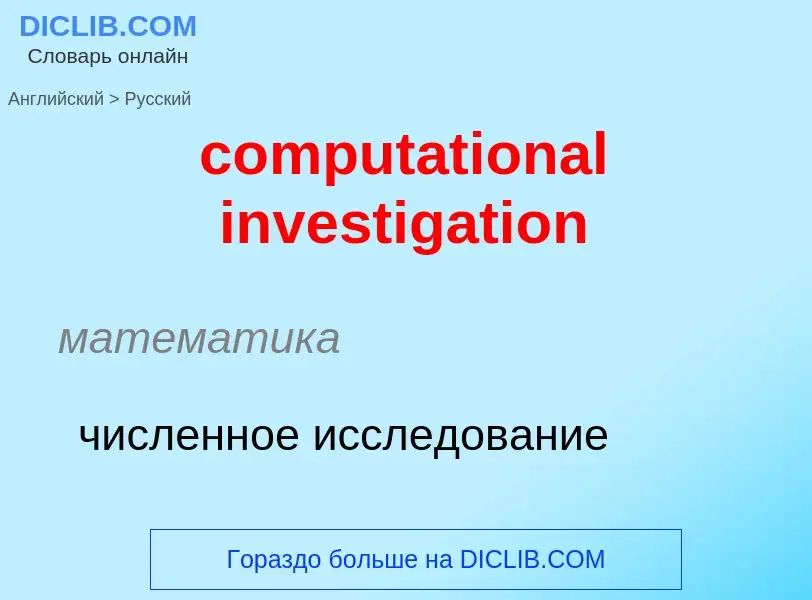Translation and analysis of words by ChatGPT artificial intelligence
On this page you can get a detailed analysis of a word or phrase, produced by the best artificial intelligence technology to date:
- how the word is used
- frequency of use
- it is used more often in oral or written speech
- word translation options
- usage examples (several phrases with translation)
- etymology
computational investigation - translation to russian
математика
численное исследование
['mə:də,skwɔd]
общая лексика
"Отряд розыска убийц", "Опергруппа убийств" (неофициальное название отделения Департамента уголовного розыска [Criminal Investigation Department], занимающегося расследованием особо опасных преступлений, связанных с убийством)
общая лексика
вычисления для решения научных задач, научные расчёты
Definition
Wikipedia

Computational photography refers to digital image capture and processing techniques that use digital computation instead of optical processes. Computational photography can improve the capabilities of a camera, or introduce features that were not possible at all with film based photography, or reduce the cost or size of camera elements. Examples of computational photography include in-camera computation of digital panoramas, high-dynamic-range images, and light field cameras. Light field cameras use novel optical elements to capture three dimensional scene information which can then be used to produce 3D images, enhanced depth-of-field, and selective de-focusing (or "post focus"). Enhanced depth-of-field reduces the need for mechanical focusing systems. All of these features use computational imaging techniques.
The definition of computational photography has evolved to cover a number of subject areas in computer graphics, computer vision, and applied optics. These areas are given below, organized according to a taxonomy proposed by Shree K. Nayar. Within each area is a list of techniques, and for each technique one or two representative papers or books are cited. Deliberately omitted from the taxonomy are image processing (see also digital image processing) techniques applied to traditionally captured images in order to produce better images. Examples of such techniques are image scaling, dynamic range compression (i.e. tone mapping), color management, image completion (a.k.a. inpainting or hole filling), image compression, digital watermarking, and artistic image effects. Also omitted are techniques that produce range data, volume data, 3D models, 4D light fields, 4D, 6D, or 8D BRDFs, or other high-dimensional image-based representations. Epsilon photography is a sub-field of computational photography.



